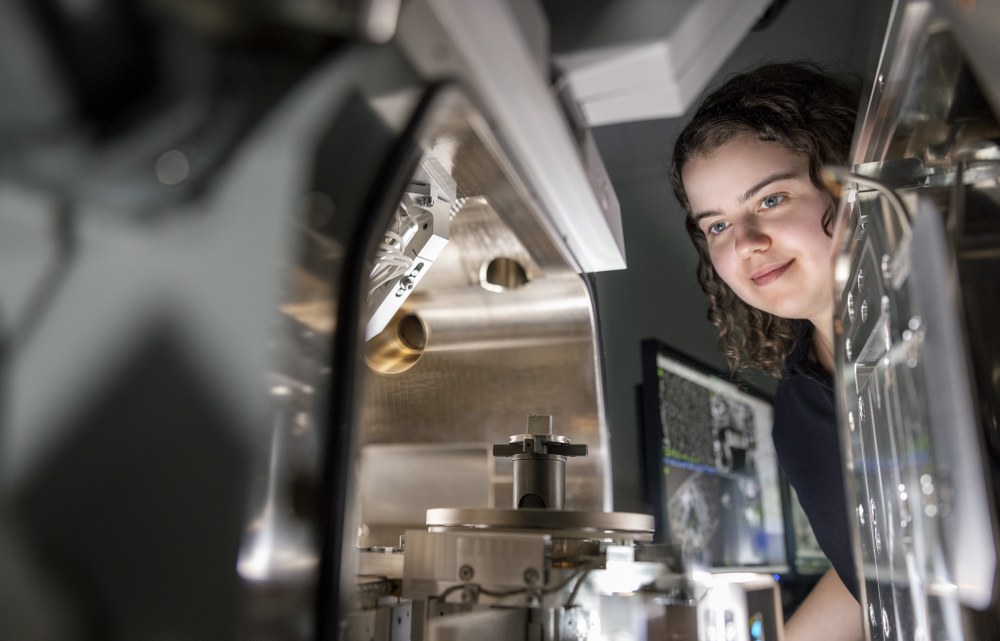Cross-Sectional-Group: Analytical Research and Metallography
Prerequisites for optimal microscopic examinations
The combination of imaging (light microscopy, laser scanning microscopy, scanning and transmission electron microscopy), diffraction methods (X-ray diffraction, EBSD, fine-range and convergent electron diffraction), imaging with composition-sensitive methods (BSE and HAADF imaging) and spectroscopy (EDX) is extremely productive.
The essential prerequisite for microscopic examinations is effective and artifact-free sample preparation. The basis for sample preparation is provided by the institute's metallography laboratory.
Samples for light and scanning electron microscopy can be post-treated by appropriate chemical etching as well as plasma or ion beam etching to enable the detection of certain structural elements. Sample preparation with focused ion beams (FIB) enables local sample preparation on the micrometer scale as well as the three-dimensional reconstruction of sample volumes. Sample preparation is particularly important for transmission electron microscopy. The aim here is to produce electron-transparent areas with a thickness of 20 – 150 nm from defined sample regions. Considerable know-how has been built up for the target preparation of complex composite materials with ceramic and metallic components (CMC, metal-plastic laminates, protective and thermal insulation layers). Conventional techniques as well as preparation with focused Ga ions (FIB) are available. Documentation, evaluation and interpretation of the results are inseparable parts of the processing of complex questions that are processed using different methods.
Equipment:
- Various reflected light microscopes for brightfield, darkfield, polarization and DIC imaging
- Laser scanning microscope Zeiss LSM 700
- Scanning electron microscopes Zeiss Ultra 55 (with SE, BSE (ASB), in-lens SE and BSE (ESB) detector, EDX and EBSD system) and Hitachi HU3900 (with SE, BSE detectors as well as low vacuum mode and LV-SE detector, EDX system)
- “Dual-beam” two-beam ion fine beam system (FIB/REM) FEI Helios 600i with SE and BSE chamber and “in-lens” detectors as well as secondary ion detector, as well as EDX and WDX detector
- Transmission electron microscope Philips Tecnai F30 with scanning unit, HAADF detector, windowless EDAX-EDX system based on SSD
- X-ray laboratory with two Bruker D8 Advance powder diffractometers, high-temperature chambers and Bruker D8 Discover universal diffractometer (Göbelspiegel, Eulerwiege, HiStar system)
- Various cutting, grinding and polishing machines as well as embedding presses
- Various coating and ion beam etching devices for SEM and TEM samples, ion etching systems for TEM preparation (Gatan Duomill and PIPS, Leica RES102), trough grinding device and ultrasonic core drill, tripod grinding device
Do you have any questions about analytics and metallography? Please do not hesitate to contact us. We're happy to help!

